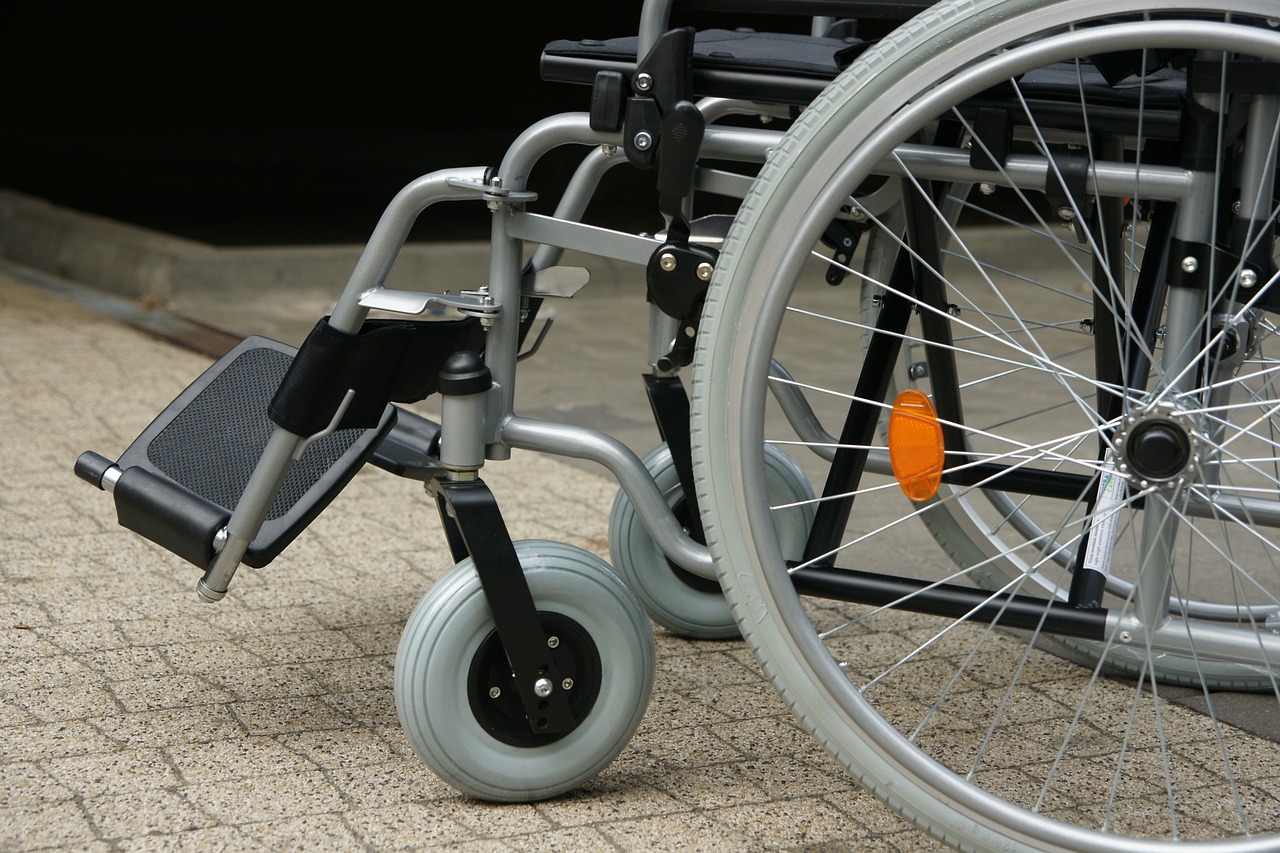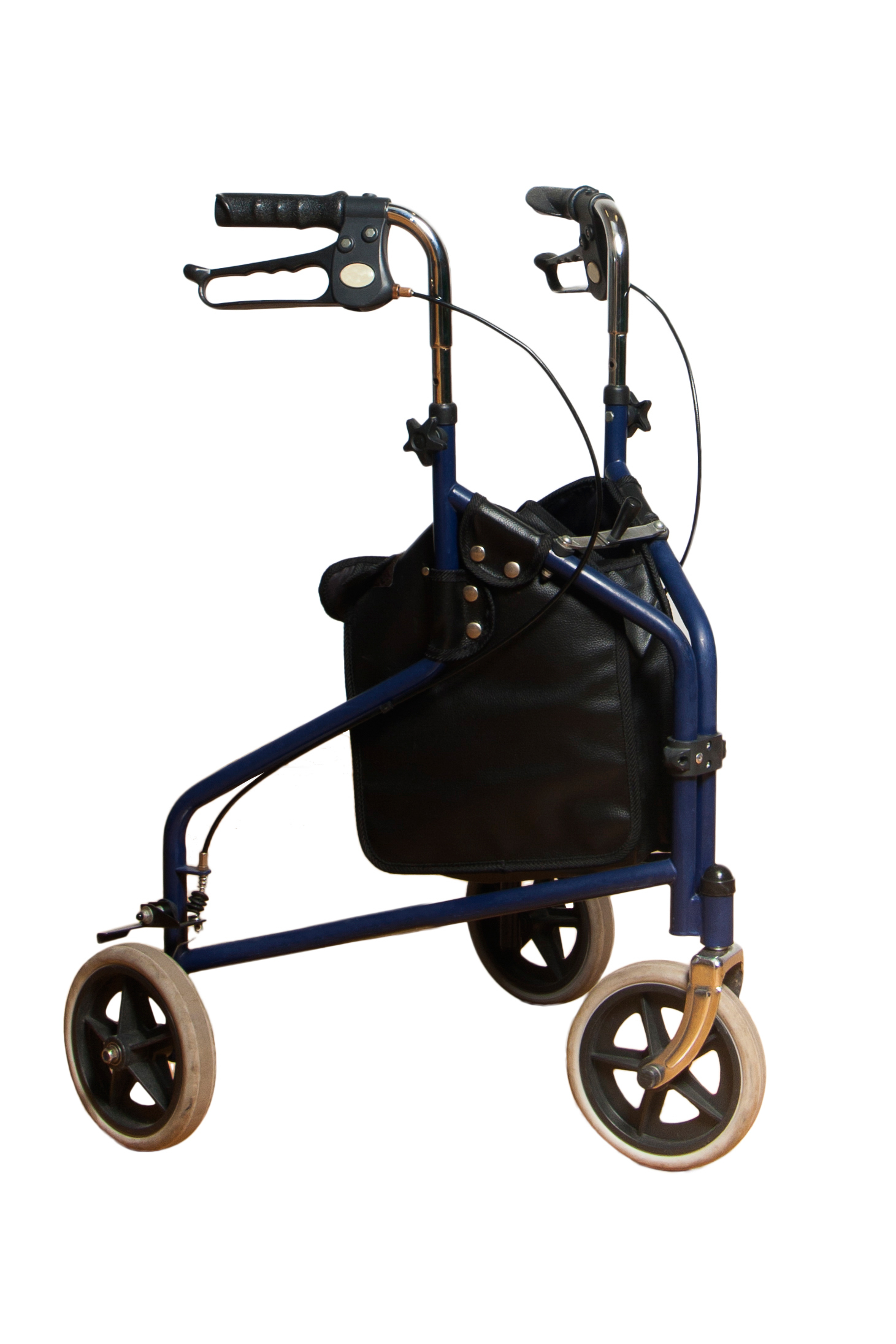Transport chairs and wheelchairs share a few similarities, but they’re actually completely different mobility aids.
And even though they’re often used interchangeably, they really shouldn’t be – each has it’s own distinct uses.
Ultimately, choosing the right device depends on factors like mobility, lifestyle, physical strength, and caregiver availability.
In this guide, we’ll go over the key differences between transport chairs and wheelchairs, as well as the pros and cons and situations where each option makes more sense.
After reading, you or a loved one will know everything you need to in order to choose the right option to best meet your needs.
What’s a Transport Chair?
A transport chair is a lightweight mobility device designed to be pushed by a caregiver.
Unlike a traditional wheelchair, it typically has 4 small wheels that are all the same size.
And since there are no large wheels to grab and push with your hands, this means transport chairs require assistance for movement.
Technically speaking, you can push yourself around with your feet (and I see patients doing this all the time), but these chairs are really designed to be pushed by a caregiver.

The above image is of an extra-lightweight transport chair, so it may look a little different than your traditional chairs. But you can still notice how much smaller all 4 wheels are, making them impossible to propel with your hands.
Key Features of Transport Chairs:
- Lightweight and compact design for easy portability.
- Four small wheels, making it ideal for smooth surfaces.
- Folding frames for simple storage and travel.
- Brakes that hold the chair in one spot.
Who Should Use a Transport Chair?
Transport chairs are designed to be pushed by a caregiver, so this makes them best suited for individuals who cannot self-propel a wheelchair.
This could be seniors who lack the upper body strength to do so or who have severe joint pain that makes propelling a wheelchair unrealistic.
Folks with significant dementia or cognitive decline may also be unable to self-propel, making a transport chair more appropriate.
Transport chairs can also be handy for individuals who are safe to ambulate inside their homes (with or without a walker), but who aren’t able to safely walk outdoors.
Whether it’s due to shortness of breath, balance issues, or limited endurance, transport chairs can work well for seniors who don’t feel comfortable walking longer distances outside.
Seniors or patients who need assistance in specific scenarios, such as hospital visits or outings, may benefit from temporary use of a transport chair.
What’s a Wheelchair?
A wheelchair is a versatile mobility aid that can be self-propelled by the user or pushed by a caregiver.
It features larger rear wheels equipped with hand rims for independent use and two smaller wheels in the front.
Wheelchairs (manual) are designed first and foremost for independent use through self-propulsion.
These chairs allow folks who may struggle with standing and walking the ability to push themselves throughout their homes and environments.
Wheelchairs can also be pushed by a caregiver though, when the need arises.
Wheelchairs are usually a bit heavier and bulkier than transport chairs, making them better options for extended use.
They can also come with seat cushions and additional features that make them more comfortable for longer periods of use.

Here’s an image of a classic manual wheelchair. Notice the large rear wheels that allow you to grab and propel yourself without needing a caregiver to push you.
Key Features of Wheelchairs:
- Larger rear wheels for self-propulsion.
- More robust and often heavier than transport chairs.
- Brakes for staying in one spot.
- Options for customization, including reclining or powered versions and the addition of cushions and other features.
Who Should Use a Wheelchair?
Wheelchairs are designed for independence and self-propulsion, so they are better suited for individuals who have the ability to push themselves.
Again, this doesn’t mean caregivers can’t occasionally assist with traversing rough terrain or when traveling longer distances.
But generally speaking, wheelchairs are better suited for individuals who want to maintain their own independence.
They also work better for folks who need support on a regular, daily basis, given how much heavier and durable they are vs transfer chairs.
Transport Chairs vs. Wheelchairs: Key Differences
| Feature | Transport Chair | Wheelchair |
|---|---|---|
| Mobility | Requires caregiver assistance | Can be self-propelled or assisted |
| Weight | Lightweight and easy to carry | Heavier and more robust |
| Wheel Size | Smaller, designed for smooth surfaces | Larger rear wheels for better versatility |
| Usage | Short-term, occasional use | Long-term, frequent use |
| Cost | Typically more affordable | More expensive with customization options |
As the above table shows, transport chairs are better suited for short term, occasional use where a caregiver is needed to push the user.
Wheelchairs, on the other hand, are better suited for long-term use, where the individual is aiming to maximize independence (and has the capabilities to propel themselves).
You’ll also notice that transfer chairs are usually a bit cheaper than wheelchairs too.
Prices for both devices can vary greatly, but generally speaking, wheelchairs tend to cost ~$150 – $250, while transport chairs often cost $100 – $150.
And we’re talking about basic, affordable models for both types of mobility aids here.
Pros and Cons – Transport Chairs
Pros
- Lightweight and portable
- Budget-friendly
- Ideal for quick trips and smooth surfaces
Cons
- Requires a caregiver for mobility
- Not suitable for uneven terrains or independent use
- Not as comfortable for extended use
Pros and Cons – Wheelchairs
Pros
- Allows for self-propulsion
- Durable and supportive for long-term use
- More adaptable for outdoor and uneven surfaces
- More comfortable
- Allows for caregiver to push as well
Cons
- Heavier and less portable
- More expensive
Choosing the Right Option
Ok, that about does it when it comes to the differences between transport chairs and wheel chairs.
Before we wrap things up, I want to offer a few suggestions about when each chair would be the better choice.
These rules certainly aren’t written in stone, but consider the following…
Choose a Transport Chair If:
- You need a lightweight device for occasional use
- A caregiver is always available to assist
- You prioritize portability for travel or storage
Choose a Wheelchair If:
- You prefer independence and self-propulsion
- You need a device for daily or long-term use
- You require additional features like reclining or powered assistance
Final Thoughts
Ok, I think that about does it.
Transport chairs and wheelchairs both serve valuable roles in enhancing mobility, but their uses and benefits differ quite a bit.
When deciding between the two devices, the first question should be whether or not you plan on propelling yourself.
If the answer is yes, you should be looking for a wheelchair.
If the answer is no, a transport chair is likely the better fit (unless you plan on using it for daily mobility around your home, in which case a wheelchair may still be the better fit).
Now just because a transport chair is designed for pushing, doesn’t mean it can’t be used for daily, around the house use.
I’ve actually had several patients over the years that use transport chairs essentially like wheelchairs, propelling themselves slowly with their feet.
Considering how much more affordable transport chairs are than wheelchairs, I understand why some folks choose to do this.
But the added comfort and durability a proper wheelchair offers still makes them the preferred option in these cases.
Anyway, I encourage you to consider your mobility needs, lifestyle, and level of independence when making this choice.
And if you’re still unsure, consult with your local healthcare provider or physical therapist for personalized guidance.
And as always, feel free to leave me a comment below as well and I’ll try to help as much as I can.



